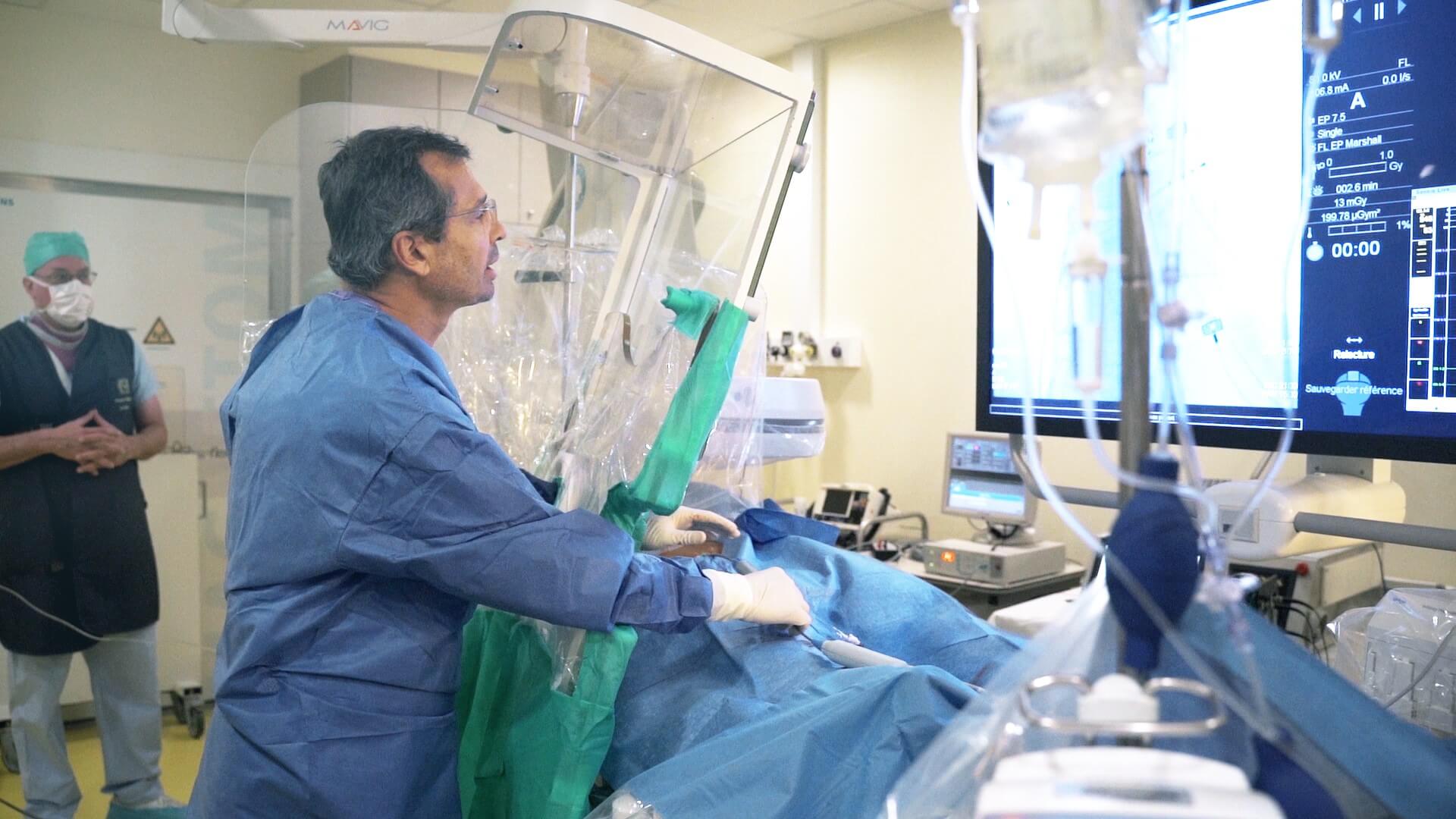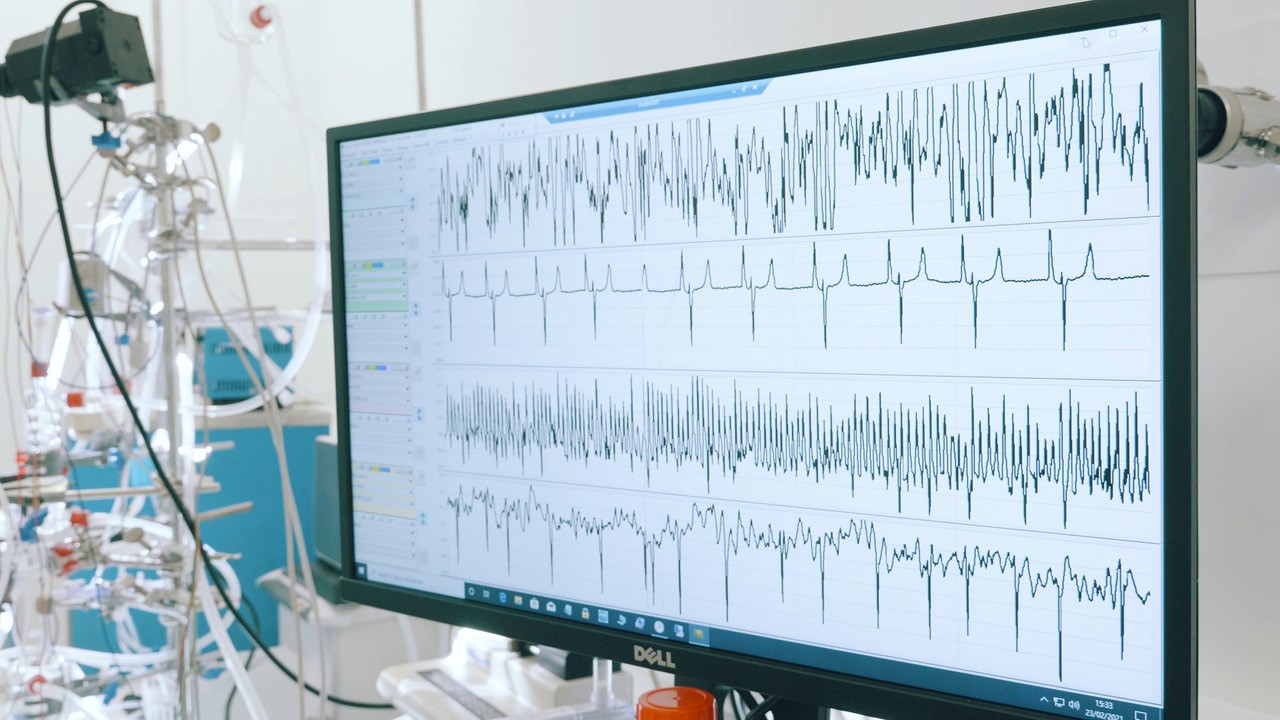Scientific chairs of excellence
Liryc has developed ambitious research programmes linked and directly led by eminent international scientists to explore very specific themes with a high potential for innovation.
Chair in age-related mechanisms of atrial fibrillation

Assessing age-related factors of atrial fibrillation
Age is identified as the main factor responsible for the onset of atrial fibrillation (AF). The prevalence of AF increases exponentially after the age of 65 and increases sevenfold up to the age of 85. Conversely, young people seem to be spared from AF, since people with congenital heart disease and severe disorders of the atria rarely develop AF before the age of 45.
Nevertheless, the correlation between AF and age is poorly understood. This programme stems from work in progress at Liryc and complementary studies carried out at the Montreal Heart Institute on the factors contributing to the development of AF.
Project goals: To assess the age-related factors that protect the hearts of young individuals from AF and make older individuals more vulnerable.
Specific goals:
(1) Description of metabolic and structural atrial electrical remodelling in young experimental models versus older models exposed to AF.
(2) Identification of pro/anti-AF markers, design and testing of new therapeutic candidates.
The project for this chair is carried out in conjunction with the National Research Agency’s Unmasc programme. Both projects are studying AF in experimental models.
Improving treatments for atrial fibrillation
This programme should provide major new insights into the mechanisms responsible for the occurrence of AF. The new knowledge obtained will improve our understanding of arrhythmia and lead to the identification of new therapeutic targets. These targets will then make it possible to improve treatments, as well as provide strategies to optimize the performance of existing therapeutic approaches, such as catheter ablation.
Principal collaborators at Liryc
- Prof. Stanley Nattel, Holder of the Chair, Montreal Heart Institute.
- Dr. Guido Caluori, Post-Doctoral Fellow, Metabolism team at Liryc.
- Dr. Philippe Pasdois, Lecturer, Metabolism team at Liryc.
- Prof. Pierre Jaïs, Rhythmologist at the University Hospital of Bordeaux, Professor at the University of Bordeaux, General Manager of Liryc.
- Prof. Olivier Bernus, Tissue Electrophysiology Team Leader, Scientific Director of Liryc.
Chair in cardiac imaging
Improving detailed heart characterization
The goal is to develop a highly advanced MRI methodology to improve detailed and quantitative characterization of cardiac tissue, myocardial anatomy and function. The aim is to acquire new knowledge about the arrhythmogenic substrate, thereby improving the treatment of cardiac arrhythmias.
Another objective of this chair concerns the education and promotion of young talents.
To achieve these goals, the team relies on a recognized MRI methodology, state-of-the-art equipment, industrial collaborations, world-class expertise, an established international network, new mathematical concepts, as well as interdisciplinary and translational collaboration.

A tool to better support healthcare professionals
This programme should bring new knowledge in the field of cardiac arrhythmias, as well as a non-invasive, more detailed and quantitative characterization technique of the myocardial substrate. It will enable the success or failure of electrophysiological operations to be better defined and will provide a new, more efficient tool for the identification of patients likely to benefit from the placement of an implantable cardiac defibrillator (ICD).
Thanks to a rigorously interdisciplinary and collaborative approach, we rely on the expertise and the spirit of innovation of the teams to translate the mathematical and physical concepts of MRI to phantom imaging studies, to in vivo studies, to healthy volunteers, and finally to patients in collaboration with health professionals.
Principal collaborators at Liryc
- Prof. Matthias Stuber from University of Lausanne – Lausanne University Hospital, Holder of the Chair.
- Aurélien Bustin, Lausanne University Hospital Team, Post-Doctoral Fellow, Imaging Team at Liryc, Cardiovascular Magnetic Resonance Research Centre (Lausanne, Switzerland).
- Prof. Hubert Cochet, Cardiologist at University Hospital of Bordeaux, Professor University of Bordeaux, Medical Imaging Team at Liryc.
- Pierre Jaïs, Rhythmologist at University Hospital of Bordeaux, Professor University of Bordeaux, Managing Director of Liryc.
- Dr. Jérôme Yerly, Doctor from the Centre for Biomedical Imaging – Lausanne University Hospital – University of Lausanne.
Chair in neuromodulation by vein of Marshall ethanol infusion

Studying the role of the nervous system in arrhythmias
The main goal of the chair is to study the role of the nervous system in the onset and persistence of arrhythmias, as well as to understand how the ablation of cardiac innervation can protect against these arrhythmias.
(1) We have developed a technique to simultaneously record the electrocardiogram (ECG) and the activity of the skin sympathetic nerve activity (SKNA). We call this technique the “neuECG”. The first goal is to test the hypothesis that injecting ethanol into the vein of Marshall can reduce skin sympathetic nerve activity in patients with atrial fibrillation (AF).
(2) The second goal is to test the hypothesis that injecting ethanol into the sympathetic nerve bundles near the left superior vena cava causes remodelling of the stellate ganglion.
Better treatment of cardiac arrhythmias
Neuromodulation is a promising innovative method for treating patients with cardiac arrhythmias. Currently, Liryc’s clinical team leads the world in the method of injecting ethanol into the vein of Marshall for the treatment of atrial fibrillation. It is possible that this same technique could be used to treat ventricular tachycardia or fibrillation.
If the results show that injecting ethanol into the vein of Marshall can successfully reduce sympathetic outflow, we will then perform studies to determine if this technique can be used to control ventricular arrhythmias and prevent sudden cardiac death. These research objectives could therefore have a major significant impact on clinical practice.
Principal collaborators at Liryc
- Prof. Peng-Sheng Chen from Cedars-Sinai Medical Center in Los Angeles, Holder of the Chair.
- Dr. Rokhaya Faye, PhD, Tissue Electrophysiology Team at Liryc.
- Dr. Meleze Hocini, Medical Doctor, Associate Professor at University Hospital of Bordeaux, Deputy Director of Liryc.
- Prof. Olivier Bernus, Professor, Tissue Electrophysiology Team Leader, Scientific Director of Liryc.